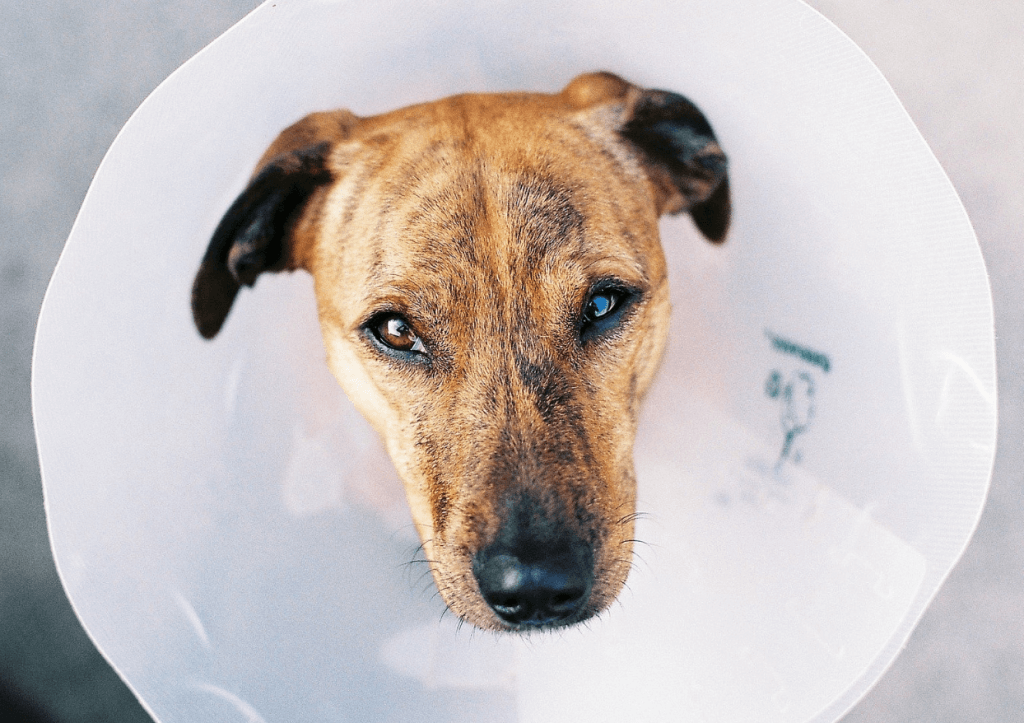If you’re thinking, ‘my dog keeps scratching and licking at their skin’, or you notice something different about their fur, they may be suffering from a dog skin problem. Your dog’s skin and coat plays a big role in their health and wellbeing and can be the first place for you to notice if something is wrong. There are many different signs and symptoms of a dog skin condition that can often be confused with a simple dog itch, so how do you know if they have an issue?
What are dog skin problems?
Dogs are always going to get the occasional itch, tickle, and graze on their skin; they’re active animals and love to run and play! But when that quick itch turns into your dog constantly scratching, or if you notice signs such as bald patches, parasites, and dry flaky skin, then they’re probably suffering from some sort of dog skin condition. Here are 10 of the most common dog skin problems as well as their symptoms and causes:
10. Allergies

If your dog keeps scratching at certain areas of their skin or it appears red and irritated, then they may have some sort of allergy. In general, there are 3 types of dog allergies: skin, food, and environmental. You can usually tell if your pooch is allergic to something if they have a reaction straight after being in contact with it, and any type of allergy has the potential to cause a reaction on their skin, even certain dog foods. If you are unsure what the allergen maybe, consider going to your vet and seeking out an overall dog skin allergies treatment to help. You can also try boosting their internal immune system and providing them with natural dog allergy support supplements.
9. Eczema

Dog eczema is not necessarily a skin disorder, infection, or disease, but an inflammation of their skin that can be caused by a number of reasons. This includes being in contact with trigger substances (such as chemicals or dust), fungal or bacterial skin infections, dry weather, flea and parasite bites, and even poor nutrition. The best way to help deal with dog skin irritation is by using a specific dog eczema treatment. You can also try to keep any irritation at bay to help prevent any flare-ups by using natural products on their skin, such as shampoos and washes, and keep them away from any possible triggers.
8. Dry skin

Just like with humans, dry skin on dogs is extremely common. You’ll notice dry skin on your dog if you see flaky or scaly areas over their body. As a secondary result of dry skin, you’ll likely also notice dull and lackluster fur. Dry skin may also cause irritation so it can additionally lead to your dog scratching at areas of their body. There can be many causes of dry skin including the environment, the weather, dehydration, and certain allergies. Fortunately, though, dry skin is one of the easier dog skin problems to deal with; you can try altering their diet to include vitamins, minerals, and essential fatty acids either through their dog food or supplements. You can also use grooming products such as specific dog shampoo for itchy skin.
7. Dermatitis

Known also as atopic dermatitis in dogs, this dog skin condition is caused by their immune system that overreacts to certain allergens. Symptoms of dermatitis in dogs include constant itching and scratching as well as red and inflamed skin. Dermatitis can occur all over their body but is most common around their ears, face, paws, feet and groin. There are a number of dog dermatitis treatments available that can either help the symptoms, such as protective and antifungal shampoos, or the cause, such as dog skin allergy supplements. Unfortunately, you can’t necessarily ‘cure’ a dog allergy, but you can take measures to strengthen their internal immune system and help their body deal with the allergen.
6. Fleas & ticks

Pesky parasites such as fleas and ticks are extremely common amongst dogs and are a big cause of a number of other dog skin conditions as a result of the irritation they cause. As fleas and ticks are parasites, this means they live off of a host. Signs of fleas and ticks on your dog include scratching, shaking, licking at the skin, and redness. In most cases, you will also be able to see the flea or tick on your dog’s skin or within their fur, so are quite an easy dog skin problem to identify. Thankfully, as it is quite a common issue, there are many products out there to help including flea and tick killers, preventative sprays, and protective shampoos.
5. Mange

There are two different types of mange, sarcoptic and demodectic, which are both caused by mites. These are another type of parasite that lives on your dog’s skin and can cause infections. Sarcoptic mange is also known as “canine scabies” and can be easily spread around from dog to dog. This type can cause severe irritation as well as inflammation, bald patches, sores, scabs, and even a sort of dog skin rash. Demodectic mange, on the other hand, is far less contagious and although has similar symptoms, it can cause less skin irritation. The best way to get rid of mites is to use a specific mite treatment for dogs and keep your pet and their living environment as clean as possible.
4. Ringworm

Did you know that ringworm is caused by a fungus, not an actual worm? It gets its name from the distinctive ring-like lesions that the fungus causes on the skin. Alongside the round red areas, ringworm also causes irritation, inflammation, and bald patches. As a result, you’ll often find your dog scratching at the affected area which can make it worse. The ringworm fungus can be easily passed from dog to dog through close contact, so is common in puppies and in situations where dogs spend a lot of time close to each other. The best way to help the fungus is to use an antifungal dog shampoo or treatment.
3. Yeast infections

This is a very common type of dog skin infection and, as the name suggests, is caused by abnormal yeast growth that usually occurs around the ears or paws. Symptoms of a dog yeast infection include irritation, pawing or chewing at the area, discolored or greasy skin, and a foul smell. Whilst any dog can potentially get a yeast infection, they are most common in certain breeds such as Westies and Cocker Spaniels. If you find your dog has a yeast infection, you can take care of it with specific treatments and products like protective cleansers.
2. Seborrhea

Appearing anywhere on the body, seborrhea is a dog skin condition that results in greasy skin and dandruff. The most common cause of seborrhea is through genetics, so can often last their whole lifetime. Dogs can also get the condition through allergies or hormonal issues, meaning that overall it can be very difficult to permanently get rid of your dog’s flaky skin once they have it. You can take action to help the symptoms of seborrhea though, including regular washing and grooming of your dog’s skin and fur as well as using specific cleansing dog shampoos.
1. Hot spots

Also known as Moist Dermatitis, hot spots are areas of inflamed and red skin that can feel hot to the touch. They can occur anywhere on your dog’s body but is usually found around the head, hips, or chest. The causes of hot spots in dogs can vary, but is commonly from either flea bites, infections, or excessive chewing or licking at that area of skin. Your dog scratching at the area can also cause issues with hot spots and can make them worse. There are a number of ways to help this specific dog’s skin condition, including natural hot spot sprays and regular bathing and grooming.
How to care for your dog’s skin
So what is the best way to look after your dog’s skin? Whether it’s to try and prevent a potential dog skin disease or to deal with a current issue, the best way to help is through regular care. Keeping up with their grooming as well as constant checks will allow you to spot any small issues before they get any bigger. Using certain products that are designed to cleanse and protect your dog’s skin and fur is also a positive way to help many dog skin conditions. You can also make a number of dog scratching home remedies at home if you find irritation is the biggest problem for your dog, as these dog itching remedies contain natural ingredients that can help to keep irritation, redness, and inflammation at bay.





